Deck 6: Transformations of Functions and Their Graphs
Question
Question
Question
Question
Question
Question
Question
Question
Question
Question
Question
Question
Question
Question
Question
Question
Question
Question
Question
Question
Question
Question
Question
Question
Question
Question
Question
Question
Question
Question
Question
Question
Question
Question
Question
Question
Question
Question
Question
Question
Question
Question
Question
Question
Question
Question
Question
Question
Question
Question
Question
Question
Question
Question
Question
Question
Question
Question
Question
Question
Question
Question
Question
Question
Question
Question
Question
Question
Question
Question
Question
Question
Question
Question
Question
Question
Question
Question
Question
Question

Unlock Deck
Sign up to unlock the cards in this deck!
Unlock Deck
Unlock Deck
1/85
Play
Full screen (f)
Deck 6: Transformations of Functions and Their Graphs
1
If the graph of the line is reflected about the -axis, the resulting line has the equation Y=------------------x + ------------
Part A: -2
Part B: -1
Part B: -1
2
An odd function is increasing and concave down in the first quadrant. How does the function behave in the third quadrant?
A) It is decreasing and concave up
B) It is increasing and concave down
C) It is increasing and concave up
D) It is decreasing and concave down
A) It is decreasing and concave up
B) It is increasing and concave down
C) It is increasing and concave up
D) It is decreasing and concave down
It is increasing and concave up
3
The function has odd symmetry and the function has even symmetry. Is the function odd, even, or neither?
odd
4
The function has odd symmetry and the function has even symmetry. Is the function odd, even, or neither?

Unlock Deck
Unlock for access to all 85 flashcards in this deck.
Unlock Deck
k this deck
5
The function has odd symmetry and the function has even symmetry. Is the function odd, even, or neither?

Unlock Deck
Unlock for access to all 85 flashcards in this deck.
Unlock Deck
k this deck
6
Some of the values of are given in the following table. If is an odd function, what is ?

Unlock Deck
Unlock for access to all 85 flashcards in this deck.
Unlock Deck
k this deck
7
The following table gives values for the functions and .

Which of the following statements are true?
A) is symmetric about the -axis.
B) is symmetric about the -axis.
C) is symmetric about the -axis.
D) is symmetric about the -axis.
E) is symmetric about the origin.
F) is symmetric about the origin.

Which of the following statements are true?
A) is symmetric about the -axis.
B) is symmetric about the -axis.
C) is symmetric about the -axis.
D) is symmetric about the -axis.
E) is symmetric about the origin.
F) is symmetric about the origin.

Unlock Deck
Unlock for access to all 85 flashcards in this deck.
Unlock Deck
k this deck
8
The following table gives some values for the function . If has even symmetry, what is ?

Unlock Deck
Unlock for access to all 85 flashcards in this deck.
Unlock Deck
k this deck
9
The graph of contains the point . What point must lie on the reflected graph if the graph is reflected about the -axis?

Unlock Deck
Unlock for access to all 85 flashcards in this deck.
Unlock Deck
k this deck
10
The graph of contains the point . What is the corresponding point on the graph if is an even function?

Unlock Deck
Unlock for access to all 85 flashcards in this deck.
Unlock Deck
k this deck
11
Given the following table of values for , find when . If you do not have sufficient information, enter "cannot determine".



Unlock Deck
Unlock for access to all 85 flashcards in this deck.
Unlock Deck
k this deck
12
How are the graphs of and related?
A) The graph of is a reflection of the graph of across the -axis.
B) The graph of is a reflection of the graph of across the -axis.
C) The graph of is a reflection of the graph of across the line .
D) The graph of is a reflection of the graph of across the line .
E) None of the above.
A) The graph of is a reflection of the graph of across the -axis.
B) The graph of is a reflection of the graph of across the -axis.
C) The graph of is a reflection of the graph of across the line .
D) The graph of is a reflection of the graph of across the line .
E) None of the above.

Unlock Deck
Unlock for access to all 85 flashcards in this deck.
Unlock Deck
k this deck
13
What is the formula for if ?
A)
B)
C)
D)
A)
B)
C)
D)

Unlock Deck
Unlock for access to all 85 flashcards in this deck.
Unlock Deck
k this deck
14
Is the function odd, even, or neither?

Unlock Deck
Unlock for access to all 85 flashcards in this deck.
Unlock Deck
k this deck
15
If the following is the graph of .
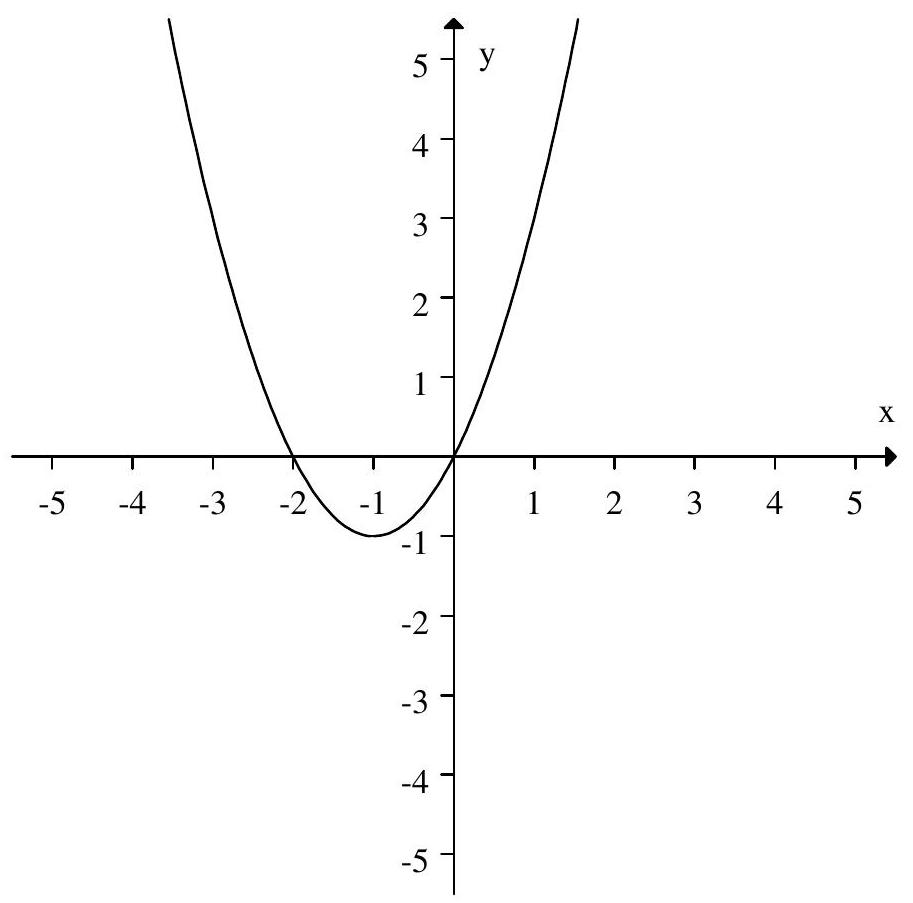
Sketch the graph of .

Sketch the graph of .

Unlock Deck
Unlock for access to all 85 flashcards in this deck.
Unlock Deck
k this deck
16
The following is the graph of .
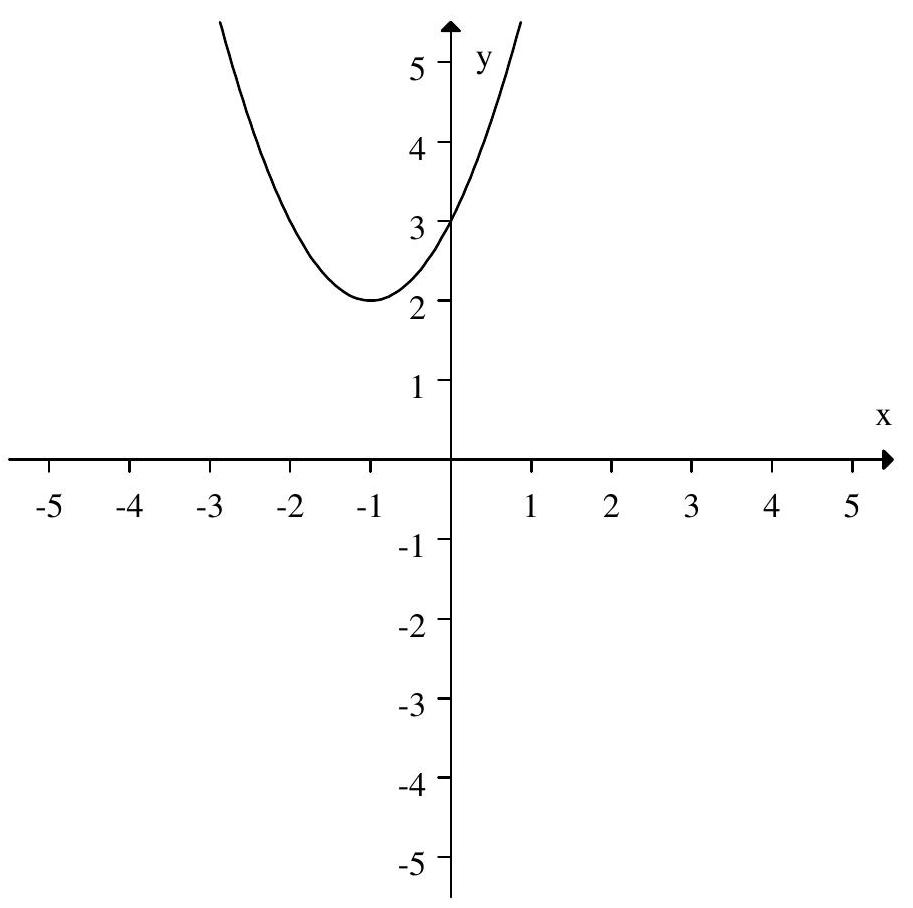
Sketch the graph of .

Sketch the graph of .

Unlock Deck
Unlock for access to all 85 flashcards in this deck.
Unlock Deck
k this deck
17
The following is the graph of .
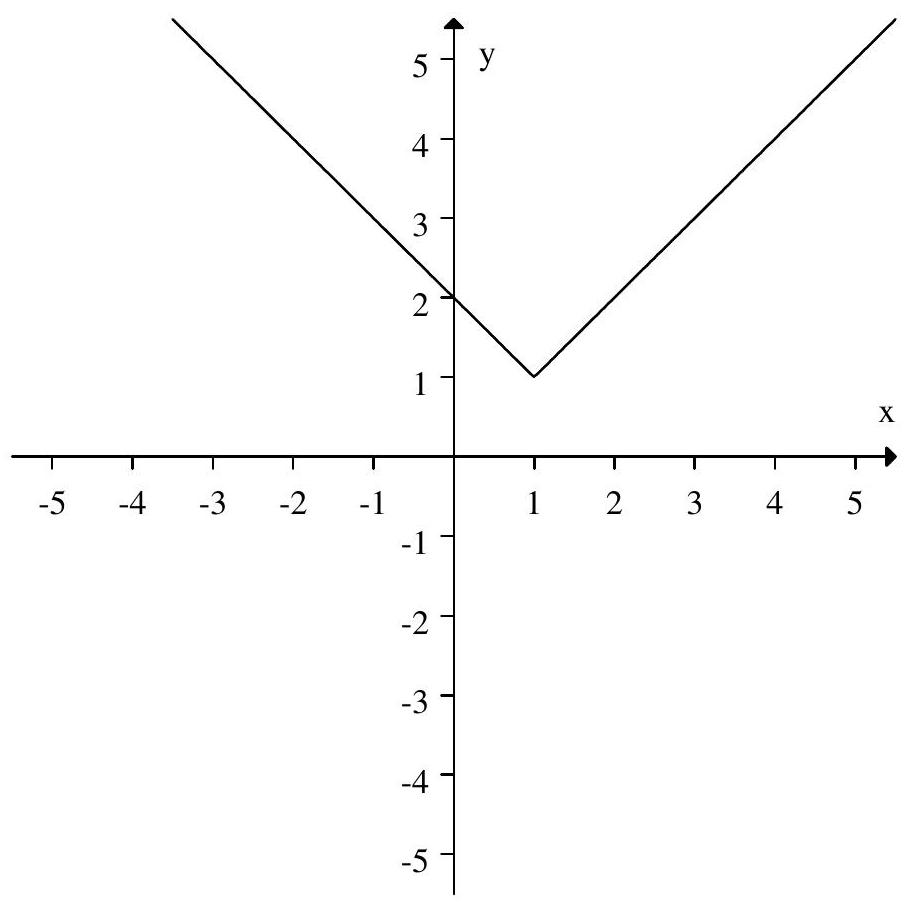
Sketch the graph of .

Sketch the graph of .

Unlock Deck
Unlock for access to all 85 flashcards in this deck.
Unlock Deck
k this deck
18
The following is the graph of .
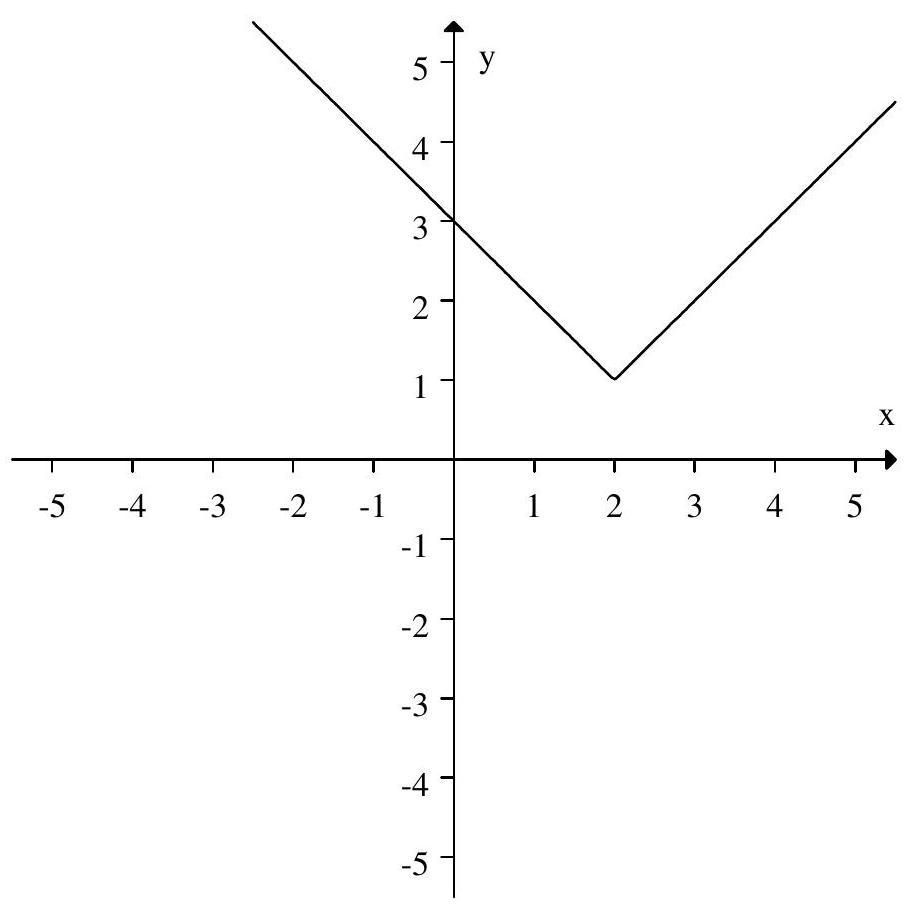
Sketch the graph of .

Sketch the graph of .

Unlock Deck
Unlock for access to all 85 flashcards in this deck.
Unlock Deck
k this deck
19
Which of the following functions are even?
A)
B)
C)
D)
A)
B)
C)
D)

Unlock Deck
Unlock for access to all 85 flashcards in this deck.
Unlock Deck
k this deck
20
Which of the following functions are odd?
A)
B)
C)
D)
A)
B)
C)
D)

Unlock Deck
Unlock for access to all 85 flashcards in this deck.
Unlock Deck
k this deck
21
If the graph of is:
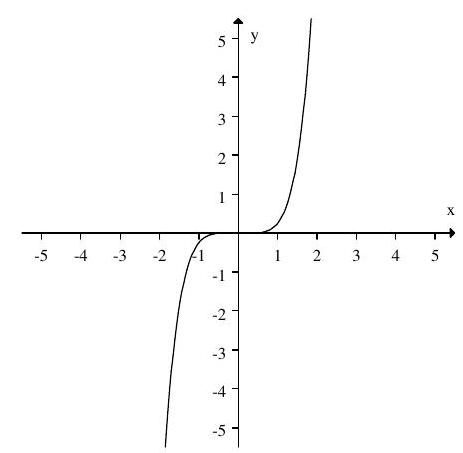
Then the graph:
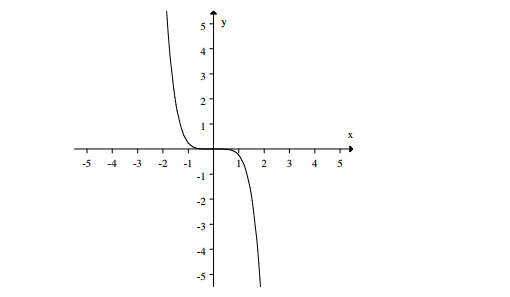
Represents:
A)
B)
C) Neither or
D) Both and

Then the graph:

Represents:
A)
B)
C) Neither or
D) Both and

Unlock Deck
Unlock for access to all 85 flashcards in this deck.
Unlock Deck
k this deck
22
If the graph of is:
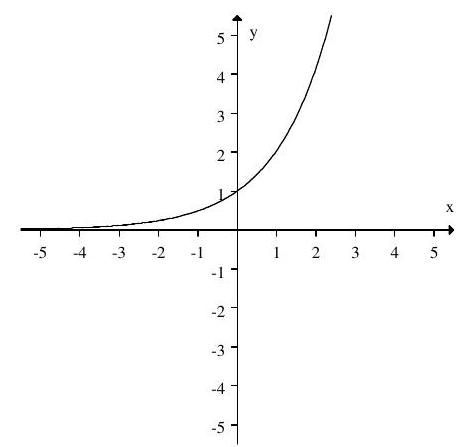
Then the graph:
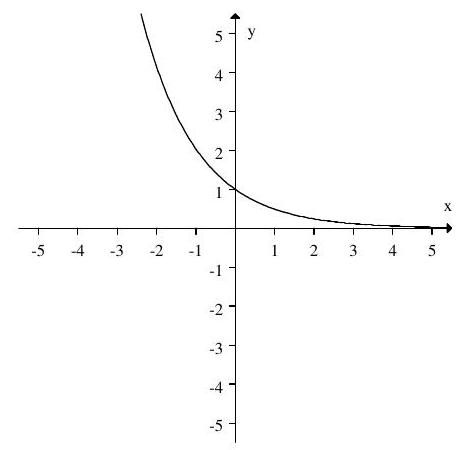
Represents:
A)
B)
C) Neither or
D) Both and

Then the graph:

Represents:
A)
B)
C) Neither or
D) Both and

Unlock Deck
Unlock for access to all 85 flashcards in this deck.
Unlock Deck
k this deck
23
If the graph of is:
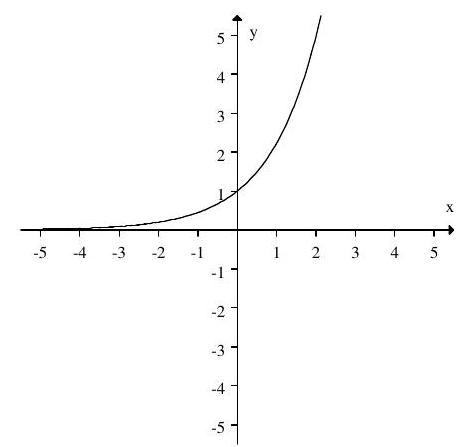
Then the graph:
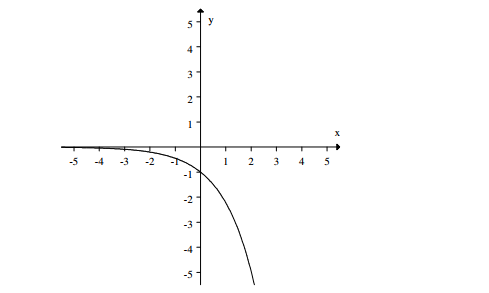
Represents:
A)
B)
C) Neither or
D) Both and

Then the graph:

Represents:
A)
B)
C) Neither or
D) Both and

Unlock Deck
Unlock for access to all 85 flashcards in this deck.
Unlock Deck
k this deck
24
The following figure shows the graph of and the graphs of several multiples of .
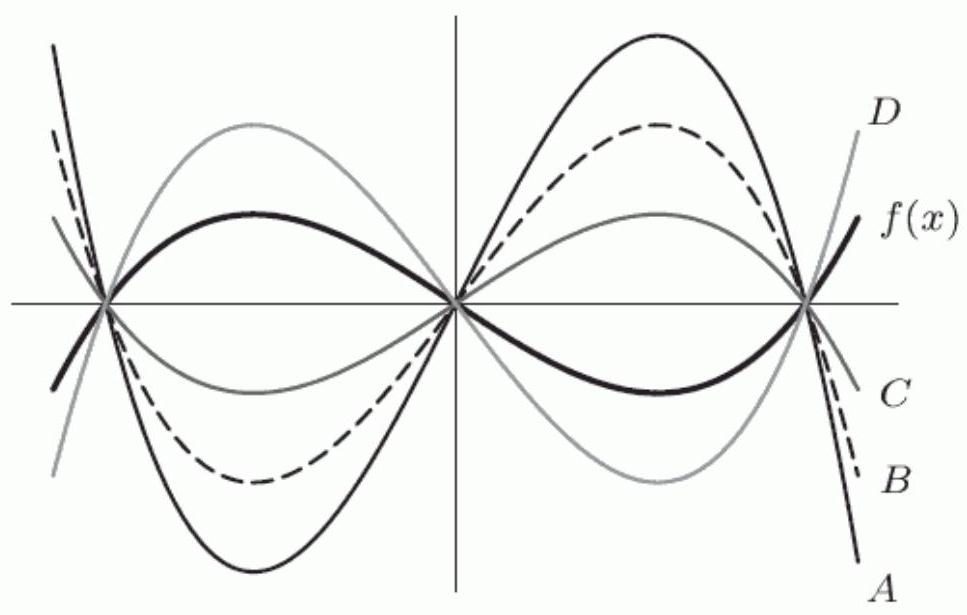
Suppose that
is the graph of ,
is the graph of ,
is the graph of ,
is the graph of .
Which of the following statements are true?
A)
B)
C)

Suppose that
is the graph of ,
is the graph of ,
is the graph of ,
is the graph of .
Which of the following statements are true?
A)
B)

C)

Unlock Deck
Unlock for access to all 85 flashcards in this deck.
Unlock Deck
k this deck
25
Below is a graph of the function . If you were to sketch a graph of , what point would the point correspond to?
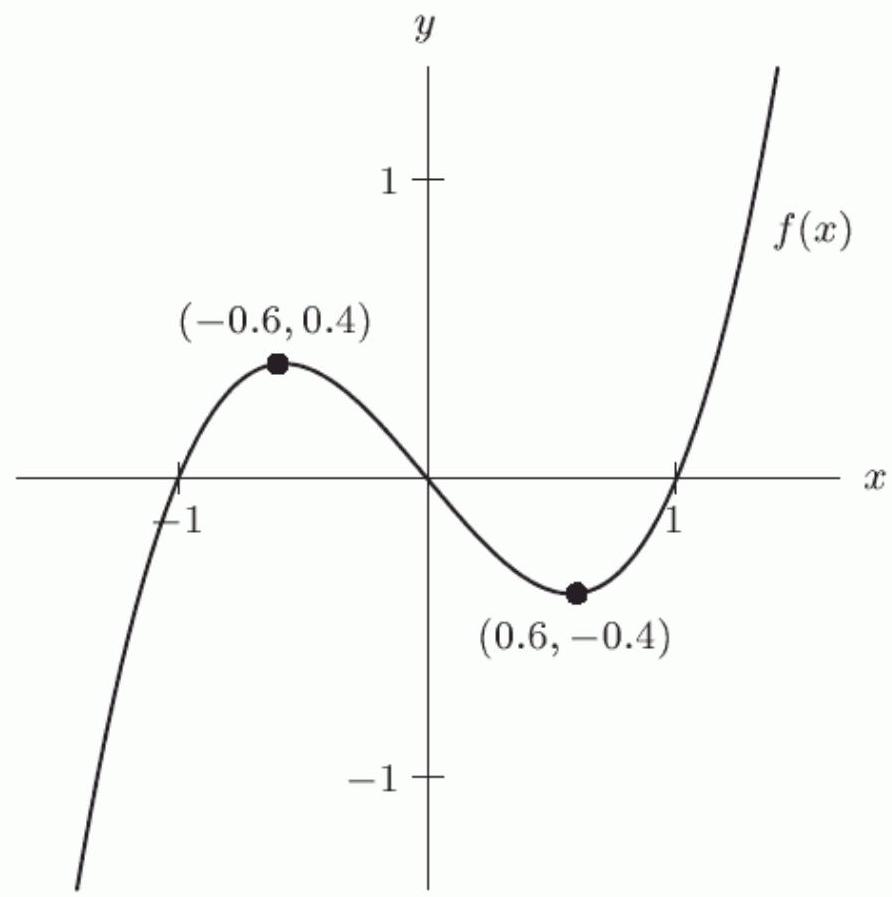


Unlock Deck
Unlock for access to all 85 flashcards in this deck.
Unlock Deck
k this deck
26
The following table gives values for , the cost per foot of drilling a well at a depth of feet. The prices given are for wells drilled on a certain ranch in Texas.

Estimate the cost of drilling a well that is 40 feet deep.

Estimate the cost of drilling a well that is 40 feet deep.

Unlock Deck
Unlock for access to all 85 flashcards in this deck.
Unlock Deck
k this deck
27
The following table gives values for , the cost per foot of drilling a well at a depth of feet. The prices given are for wells drilled on a certain ranch in Texas.

The ranch sits above a dense layer of bedrock. At what depth do you estimate that the bedrock layer begins?
A) Between 40 and 60 feet.
B) Between 100 and 120 feet.
C) Between 60 and 80 feet.
D) Between 80 and 100 feet.

The ranch sits above a dense layer of bedrock. At what depth do you estimate that the bedrock layer begins?
A) Between 40 and 60 feet.
B) Between 100 and 120 feet.
C) Between 60 and 80 feet.
D) Between 80 and 100 feet.

Unlock Deck
Unlock for access to all 85 flashcards in this deck.
Unlock Deck
k this deck
28
Let . Write a formula for the following transformations of .
A)
B)
C)
A)
B)
C)

Unlock Deck
Unlock for access to all 85 flashcards in this deck.
Unlock Deck
k this deck
29
The amount of money in your bank account is given by . Which of the following formulas matches the description "$150 more than I have in my bank account"?
A)
B)
C)
D)
A)
B)
C)
D)

Unlock Deck
Unlock for access to all 85 flashcards in this deck.
Unlock Deck
k this deck
30
The amount of money in your bank account is given by . Which of the following formulas matches the description "the amount of money I will have in my bank account 30 years from now"?
A)
B)
C)
D)
A)
B)
C)
D)

Unlock Deck
Unlock for access to all 85 flashcards in this deck.
Unlock Deck
k this deck
31
The domain of is and the range is . What is the domain and range of ?

Unlock Deck
Unlock for access to all 85 flashcards in this deck.
Unlock Deck
k this deck
32
The graph of is the graph of after it has been vertically stretched or shrunk. The point lies on the graph of . The corresponding point on the graph of is . What is a possible formula for in terms of ?

Unlock Deck
Unlock for access to all 85 flashcards in this deck.
Unlock Deck
k this deck
33
The graphs of and are shown below.
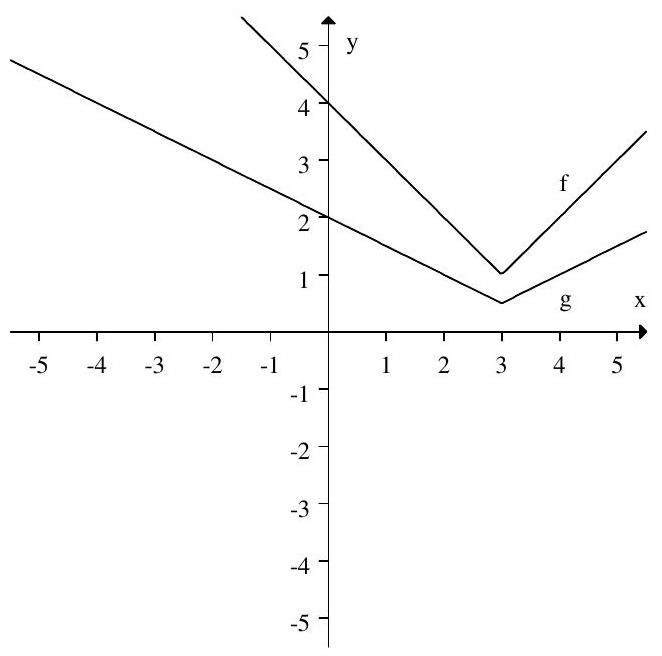
Which of the following gives a formula for in terms of ?
A)
B)
C)
D)

Which of the following gives a formula for in terms of ?
A)
B)
C)
D)

Unlock Deck
Unlock for access to all 85 flashcards in this deck.
Unlock Deck
k this deck
34
The graph of contains the point . What corresponding point must be on the graph of ?

Unlock Deck
Unlock for access to all 85 flashcards in this deck.
Unlock Deck
k this deck
35
The graph of contains the point . Which of the following points must be on the graph of ?
A)
B)
C)
D)
A)
B)
C)
D)

Unlock Deck
Unlock for access to all 85 flashcards in this deck.
Unlock Deck
k this deck
36
The function is obtained from by a single transformation. Use the tables below to find a formula for in terms of .
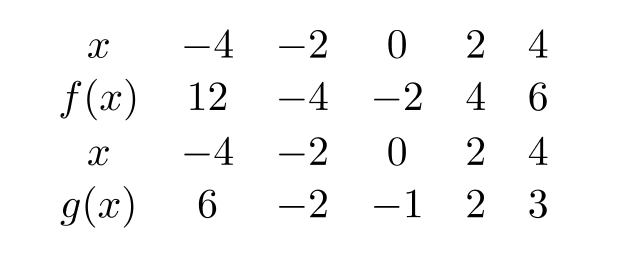


Unlock Deck
Unlock for access to all 85 flashcards in this deck.
Unlock Deck
k this deck
37
If is an odd function, determine whether is odd, even, or neither. State "cannot tell" if there is not enough information to determine.

Unlock Deck
Unlock for access to all 85 flashcards in this deck.
Unlock Deck
k this deck
38
If is an even function, determine whether is odd, even, or neither. State "cannot tell" if there is not enough information to determine.

Unlock Deck
Unlock for access to all 85 flashcards in this deck.
Unlock Deck
k this deck
39
The domain of is and the range is . If , what is the domain and range of ?

Unlock Deck
Unlock for access to all 85 flashcards in this deck.
Unlock Deck
k this deck
40
Suppose the range of is . Let .
There exists some such that .
There exists some such that .

Unlock Deck
Unlock for access to all 85 flashcards in this deck.
Unlock Deck
k this deck
41
Graph if .

Unlock Deck
Unlock for access to all 85 flashcards in this deck.
Unlock Deck
k this deck
42
Graph if .

Unlock Deck
Unlock for access to all 85 flashcards in this deck.
Unlock Deck
k this deck
43
The average rate of change of over is -3 . Find the average rate of change of over .

Unlock Deck
Unlock for access to all 85 flashcards in this deck.
Unlock Deck
k this deck
44
If the graph of is:
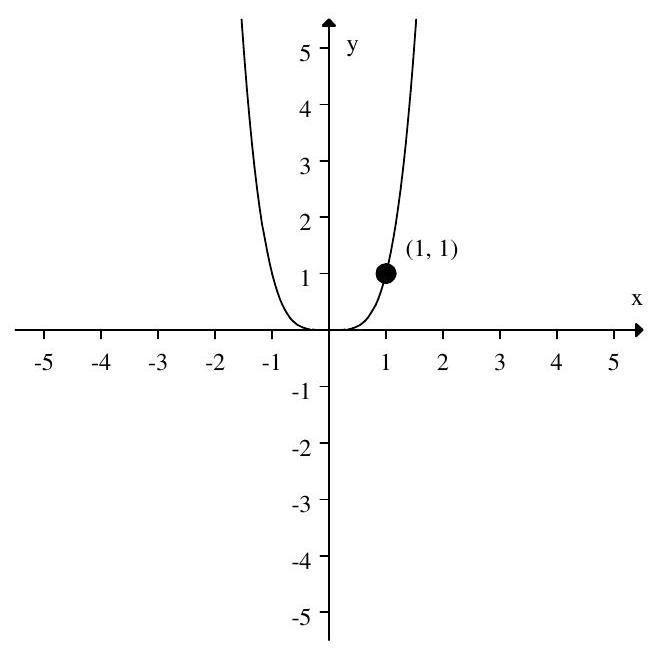
Then the graph:

Represents:
A)
B)
C)
D)

Then the graph:

Represents:
A)
B)
C)
D)

Unlock Deck
Unlock for access to all 85 flashcards in this deck.
Unlock Deck
k this deck
45
If the graph of is:
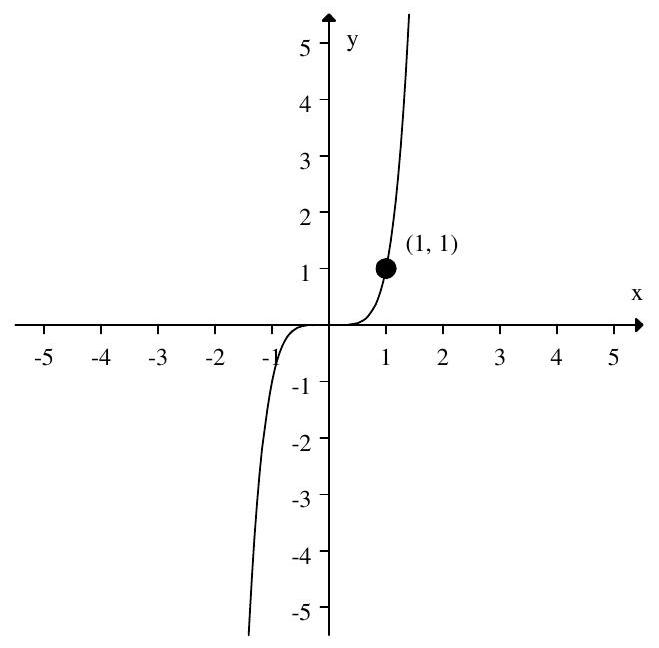
Then the graph:
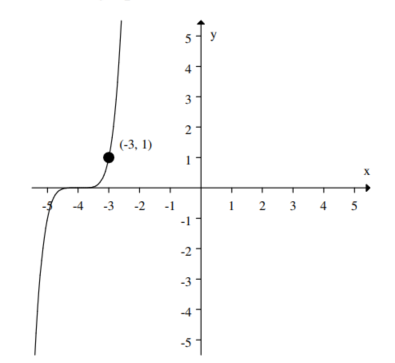
Represents:
A)
B)
C)
D)

Then the graph:

Represents:
A)
B)
C)
D)

Unlock Deck
Unlock for access to all 85 flashcards in this deck.
Unlock Deck
k this deck
46
Let 5 and -4 be the zeros of the quadratic function . What are the zeros of the function ?
A) 5
B) -4
C) 1
D) -0.8
E) 25
F) -20
A) 5
B) -4
C) 1
D) -0.8
E) 25
F) -20

Unlock Deck
Unlock for access to all 85 flashcards in this deck.
Unlock Deck
k this deck
47
Let be defined by the following graph, and let and .
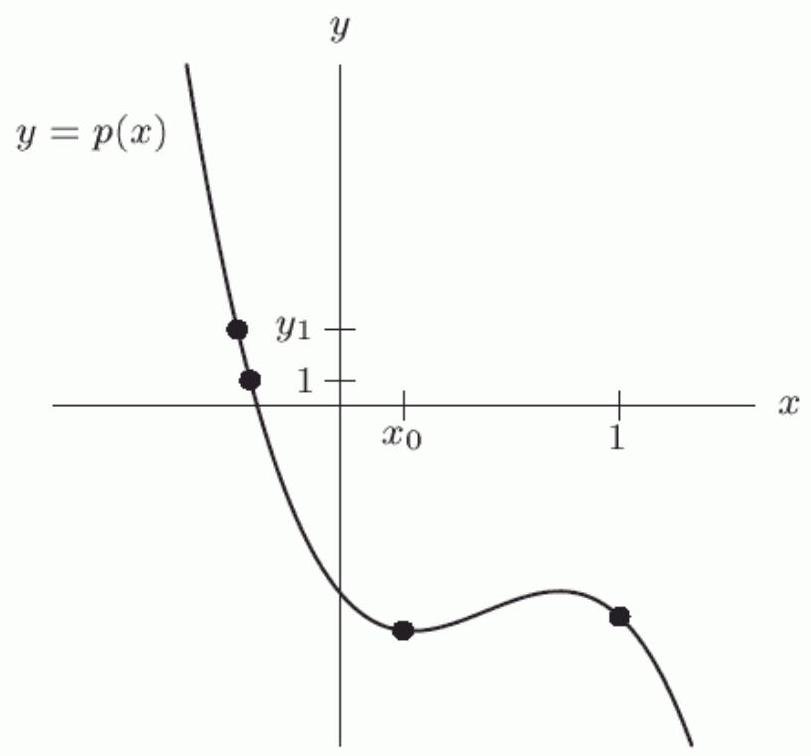
Arrange the following values in order from least to greatest by placing a " 1 " next to the least, a "2" next to the next least, etc.
A.
B.
C.

Arrange the following values in order from least to greatest by placing a " 1 " next to the least, a "2" next to the next least, etc.
A.
B.
C.

Unlock Deck
Unlock for access to all 85 flashcards in this deck.
Unlock Deck
k this deck
48
The graph of contains the point . What is the corresponding point on the graph of ?

Unlock Deck
Unlock for access to all 85 flashcards in this deck.
Unlock Deck
k this deck
49
Given , the following figure shows the graphs of , and . Which curve is the graph of ?



Unlock Deck
Unlock for access to all 85 flashcards in this deck.
Unlock Deck
k this deck
50
Using the following table, find for .



Unlock Deck
Unlock for access to all 85 flashcards in this deck.
Unlock Deck
k this deck
51
Let be the height of a box in inches. Find a formula for the height in feet?

Unlock Deck
Unlock for access to all 85 flashcards in this deck.
Unlock Deck
k this deck
52
The graphs of and are shown at the right.
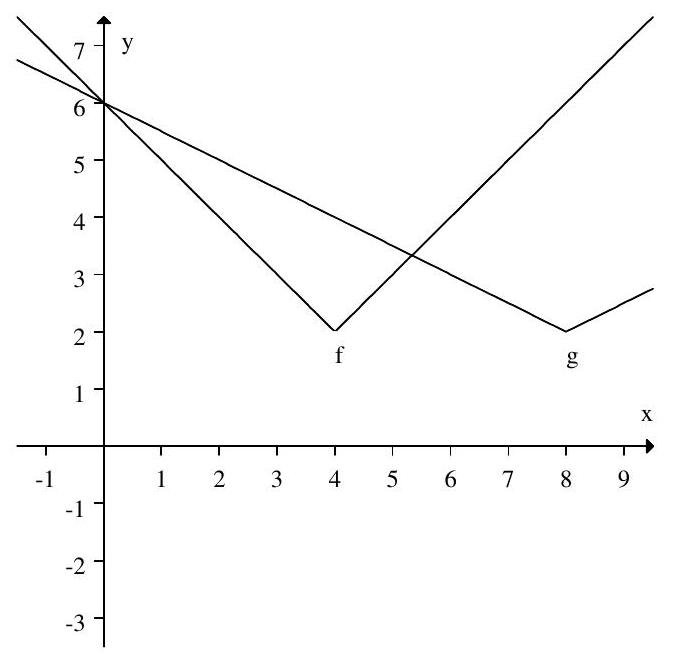
Which of the following gives a formula for in terms of ?
A)
B)
C)
D)

Which of the following gives a formula for in terms of ?
A)
B)
C)
D)

Unlock Deck
Unlock for access to all 85 flashcards in this deck.
Unlock Deck
k this deck
53
Suppose is an even function. Determine whether is odd, even, or neither. Write "cannot tell" if there is not enough information to determine.

Unlock Deck
Unlock for access to all 85 flashcards in this deck.
Unlock Deck
k this deck
54
Suppose is an odd function. Determine whether is odd, even, or neither. Write "cannot tell" if there is not enough information to determine.

Unlock Deck
Unlock for access to all 85 flashcards in this deck.
Unlock Deck
k this deck
55
Let represent the volume of a box with square base of side length and height 8 . By what percent does the volume increase if the side length is increased by ?

Unlock Deck
Unlock for access to all 85 flashcards in this deck.
Unlock Deck
k this deck
56
Let represent the volume in cubic feet of a box with square base of side length feet and height 7 feet. Let represent the volume in cubic inches of a box with square base of side length inches and height 84 inches. Which of the following is the correct formula for in terms of ?
A)
B)
C)
D)
A)
B)
C)
D)

Unlock Deck
Unlock for access to all 85 flashcards in this deck.
Unlock Deck
k this deck
57
The domain of is and the range is . What is the domain and range of ?

Unlock Deck
Unlock for access to all 85 flashcards in this deck.
Unlock Deck
k this deck
58
Describe the effect of the transformation on the graph of .

Unlock Deck
Unlock for access to all 85 flashcards in this deck.
Unlock Deck
k this deck
59
Let be the value of an investment months after the account was open. Write an expression that represents the value of the investment increased by .

Unlock Deck
Unlock for access to all 85 flashcards in this deck.
Unlock Deck
k this deck
60
Which of the following describes the effect of the transformation on the graph of the function ?
A) The graph is stretched vertically by a factor of 9 and stretched horizontally by a factor of 9.
B) The graph is stretched vertically by a factor of 9 and shrunk horizontally by a factor of .
C) The graph is shrunk vertically by a factor of and stretched horizontally by a factor of 9 .
D) The graph is shrunk vertically by a factor of and shrunk horizontally by a factor of .
A) The graph is stretched vertically by a factor of 9 and stretched horizontally by a factor of 9.
B) The graph is stretched vertically by a factor of 9 and shrunk horizontally by a factor of .
C) The graph is shrunk vertically by a factor of and stretched horizontally by a factor of 9 .
D) The graph is shrunk vertically by a factor of and shrunk horizontally by a factor of .

Unlock Deck
Unlock for access to all 85 flashcards in this deck.
Unlock Deck
k this deck
61
Which of the following describes the effect of the transformation on the graph of the function ?
A) The graph is stretched vertically by a factor of 7 and stretched horizontally by a factor of 7.
B) The graph is stretched vertically by a factor of 7 and compressed horizontally by a factor of .
C) The graph is compressed vertically by a factor of and stretched horizontally by a factor of 7 .
D) The graph is compressed vertically by a factor of and compressed horizontally by a factor of .
A) The graph is stretched vertically by a factor of 7 and stretched horizontally by a factor of 7.
B) The graph is stretched vertically by a factor of 7 and compressed horizontally by a factor of .
C) The graph is compressed vertically by a factor of and stretched horizontally by a factor of 7 .
D) The graph is compressed vertically by a factor of and compressed horizontally by a factor of .

Unlock Deck
Unlock for access to all 85 flashcards in this deck.
Unlock Deck
k this deck
62
The point lies on the graph of . What point must lie on the graph of ?

Unlock Deck
Unlock for access to all 85 flashcards in this deck.
Unlock Deck
k this deck
63
The point lies on the graph of . If the graph of is compressed vertically by a factor of and stretched horizontally by a factor of 3 , what point must lie on the transformed graph?

Unlock Deck
Unlock for access to all 85 flashcards in this deck.
Unlock Deck
k this deck
64
The point lies on the graph of . If the graph of is stretched vertically by a factor of 3 and compressed horizontally by a factor of , what point must lie on the transformed graph?

Unlock Deck
Unlock for access to all 85 flashcards in this deck.
Unlock Deck
k this deck
65
The point lies on the graph of . If the graph of is compressed vertically by a factor of and compressed horizontally by a factor of , what point must lie on the transformed graph?

Unlock Deck
Unlock for access to all 85 flashcards in this deck.
Unlock Deck
k this deck
66
Educational psychologists suggest that a child's intellectual capacity, , can be represented as a function of time, , in months, as follows:
Where are constants. What is the effect on the graph of of increasing the value of ?
A) The graph gets closer to the asymptote less quickly.
B) The asymptote moves to the right.
C) The graph gets closer to the asymptote more quickly.
D) The asymptote moves up.
Where are constants. What is the effect on the graph of of increasing the value of ?
A) The graph gets closer to the asymptote less quickly.
B) The asymptote moves to the right.
C) The graph gets closer to the asymptote more quickly.
D) The asymptote moves up.

Unlock Deck
Unlock for access to all 85 flashcards in this deck.
Unlock Deck
k this deck
67
Let . Which of the following formulas transforms the graph of by shifting it 5 units to the right, reflecting it about the -axis, and then shifting it up 3 units?
A)
B)
C)
D)
A)
B)
C)
D)

Unlock Deck
Unlock for access to all 85 flashcards in this deck.
Unlock Deck
k this deck
68
Let . The domain of the formula that transforms the graph of by shifting it 8 units to the right, reflecting it about the -axis, and then shifting it up 4 units is all real numbers except ------------

Unlock Deck
Unlock for access to all 85 flashcards in this deck.
Unlock Deck
k this deck
69
Let . Let be the function that transforms the graph of by shifting it 5 units to the right, reflecting it about the -axis, and then shifting it up 7 units. Is even, odd, or neither?

Unlock Deck
Unlock for access to all 85 flashcards in this deck.
Unlock Deck
k this deck
70
A cup of coffee is initially at , which is above room temperature. The difference between the coffee's temperature and the room's temperature decreases at the hourly rate of . Which of the following formulas gives , the coffee's temperature after hours have elapsed?
A)
B)
C)
D)
A)
B)
C)
D)

Unlock Deck
Unlock for access to all 85 flashcards in this deck.
Unlock Deck
k this deck
71
Below is a graph of the function . If you were to sketch a graph of , what point would the point correspond to?
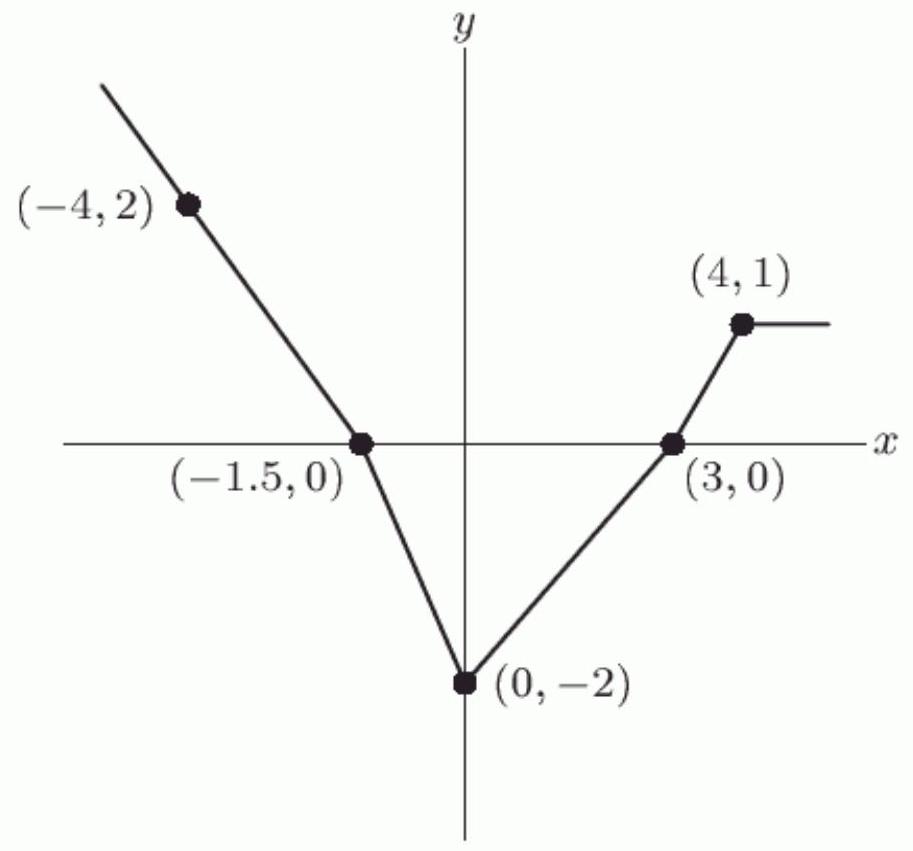


Unlock Deck
Unlock for access to all 85 flashcards in this deck.
Unlock Deck
k this deck
72
Below is a graph of the function . If you were to sketch a graph of , what point would the point correspond to?
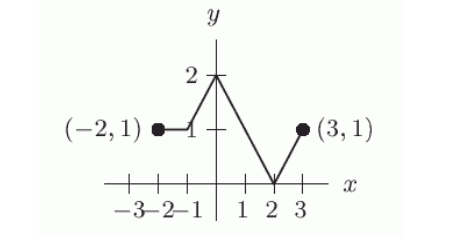


Unlock Deck
Unlock for access to all 85 flashcards in this deck.
Unlock Deck
k this deck
73
Given the graph of below, find a possible formula for .
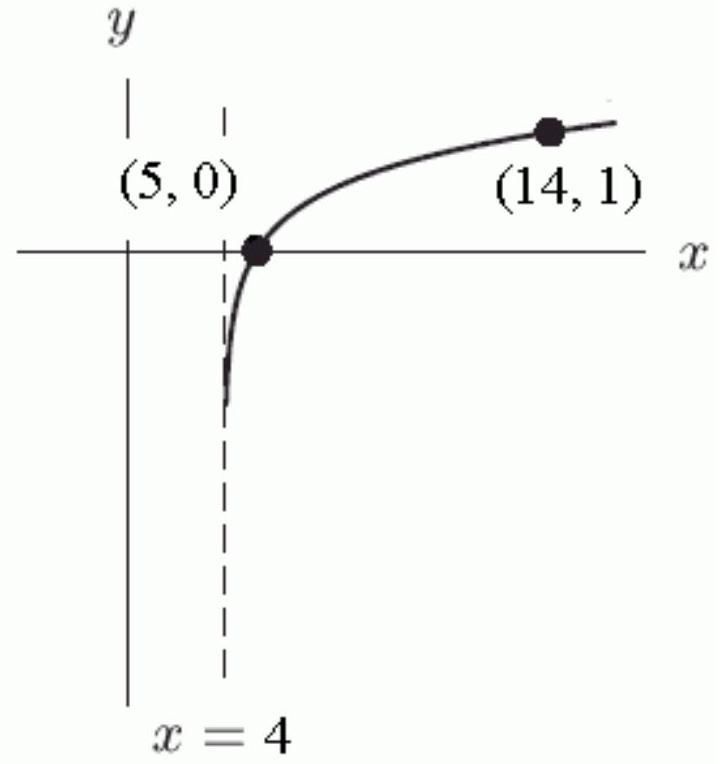
A)
B)
C)
D)

A)
B)
C)
D)

Unlock Deck
Unlock for access to all 85 flashcards in this deck.
Unlock Deck
k this deck
74
One of these graphs shows a transformation of an exponential function, and one is a transformation of a log function. The remaining graph is not a transformation of either an exponential or log function. Which graph is the transformation of a log function?
A)
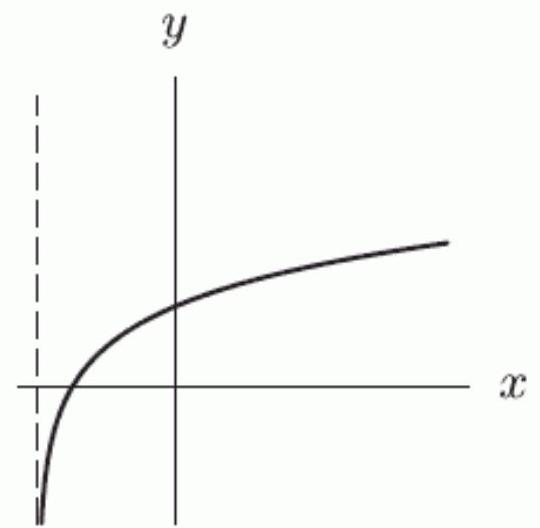
B)
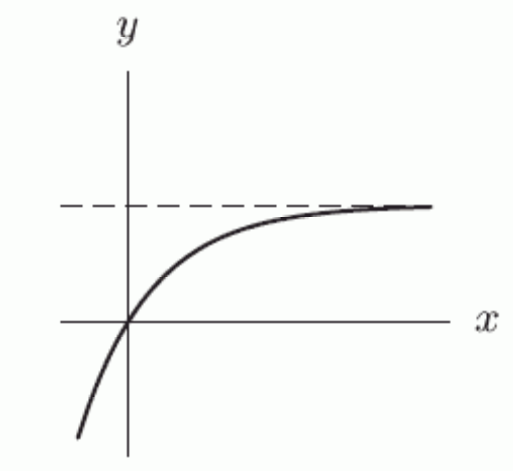
A)

B)


Unlock Deck
Unlock for access to all 85 flashcards in this deck.
Unlock Deck
k this deck
75
The graph of contains the point . What is the corresponding point on the graph of ?

Unlock Deck
Unlock for access to all 85 flashcards in this deck.
Unlock Deck
k this deck
76
The first figure is the graph of . Which of the other figures (a)-(f) show the graph of ?
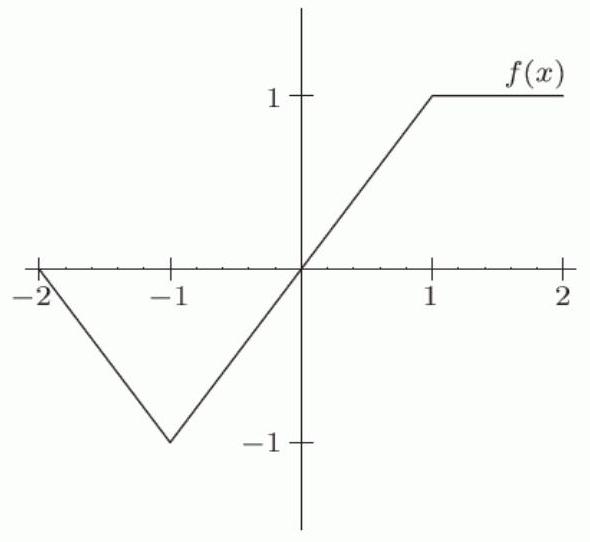
A)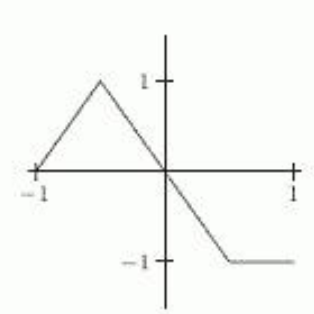
B)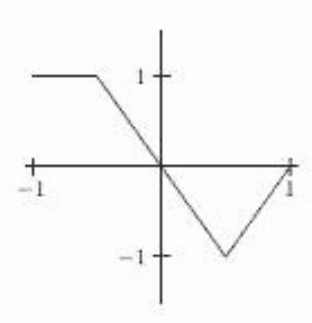
C)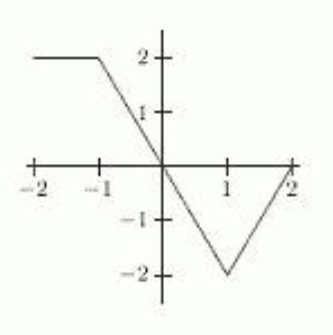
D)
E)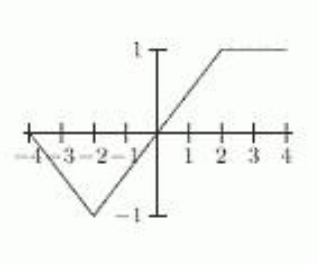
F)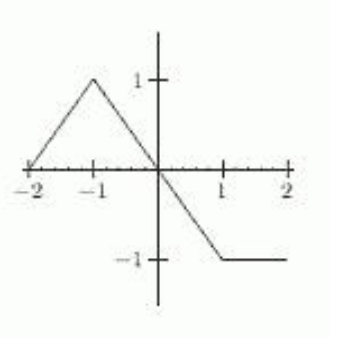

A)

B)

C)

D)

E)

F)


Unlock Deck
Unlock for access to all 85 flashcards in this deck.
Unlock Deck
k this deck
77
The graph of is shown in the first figure. Which of the other graphs (a)-(d) correspond to the formula ?
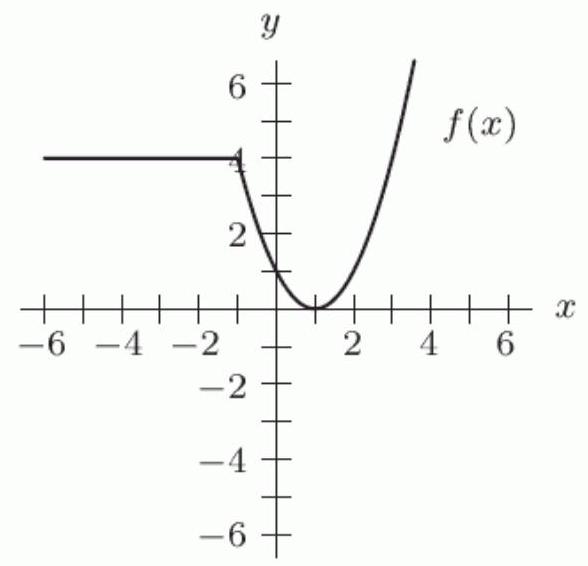
A)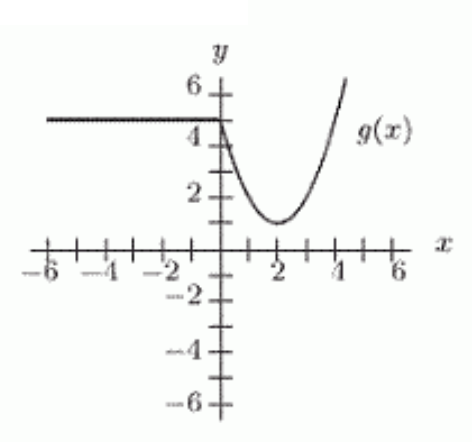
B)
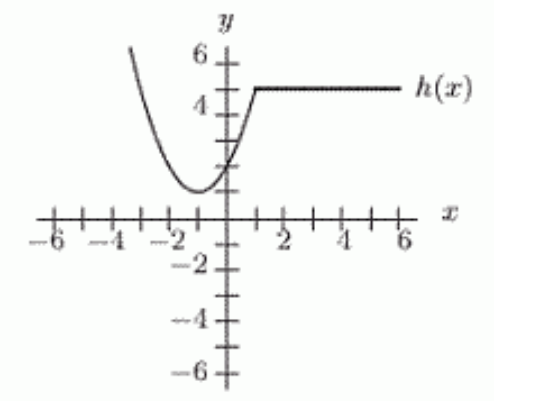
C)
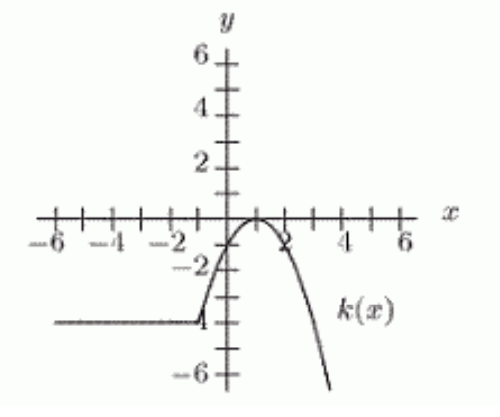
D)
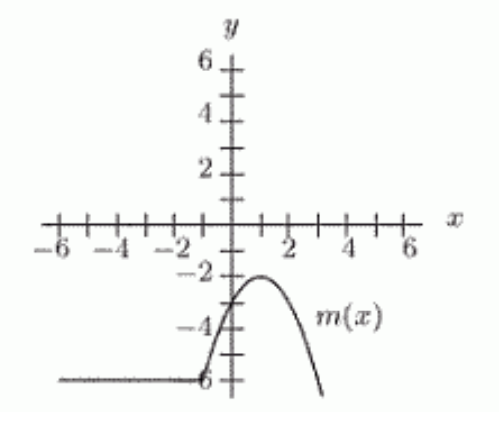

A)

B)

C)

D)


Unlock Deck
Unlock for access to all 85 flashcards in this deck.
Unlock Deck
k this deck
78
Let be the profit made by a water park in terms of the number of people, , visiting the park each day. If people attended the park yesterday, what is meant by the expression ?
A) Yesterday's profit if an additional 10 people had visited
B) 10 percent of yesterday's profit
C) Yesterday's profit if 10 times as many people had visited
D) Yesterday's profit plus an additional
A) Yesterday's profit if an additional 10 people had visited
B) 10 percent of yesterday's profit
C) Yesterday's profit if 10 times as many people had visited
D) Yesterday's profit plus an additional

Unlock Deck
Unlock for access to all 85 flashcards in this deck.
Unlock Deck
k this deck
79
The point lies on the graph of . If the graph is reflected across the -axis and compressed toward the -axis by a factor of (with ), and then translated upward 4 units, what are the new coordinates for the point ?
A)
B)
C)
D)
A)
B)
C)
D)

Unlock Deck
Unlock for access to all 85 flashcards in this deck.
Unlock Deck
k this deck
80
Let . Which of the following describe how the function transforms the graph of ?
A) The graph of is compressed horizontally by a factor of , then shifted to the right 3 units and stretched vertically by a factor of 4 .
B) The graph of is shifted to the right 3 units, then compressed horizontally by a factor of and stretched vertically by a factor of 4 .
C) The graph of is compressed vertically by a factor of , and compressed horizontally by a factor of .
D) The graph of is stretched vertically by a factor of 4 , and compressed horizontally by a factor of .
A) The graph of is compressed horizontally by a factor of , then shifted to the right 3 units and stretched vertically by a factor of 4 .
B) The graph of is shifted to the right 3 units, then compressed horizontally by a factor of and stretched vertically by a factor of 4 .
C) The graph of is compressed vertically by a factor of , and compressed horizontally by a factor of .
D) The graph of is stretched vertically by a factor of 4 , and compressed horizontally by a factor of .

Unlock Deck
Unlock for access to all 85 flashcards in this deck.
Unlock Deck
k this deck



